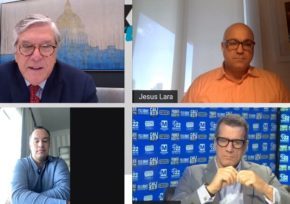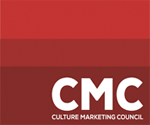2020 Holiday Season: Navigating shopper behaviors in the pandemic
 The crisis has widened consumer appetite for choice and introduced unexpected shifts in consumer behavior—this year’s holiday shopping is up for grabs.
The crisis has widened consumer appetite for choice and introduced unexpected shifts in consumer behavior—this year’s holiday shopping is up for grabs.
 The crisis has widened consumer appetite for choice and introduced unexpected shifts in consumer behavior—this year’s holiday shopping is up for grabs.
The crisis has widened consumer appetite for choice and introduced unexpected shifts in consumer behavior—this year’s holiday shopping is up for grabs.
 Organizations have been pressuring marketers to holistically measure and validate their efforts for years, but COVID-19 has certainly amplified the urgency. With advertising and budgets off track this year, marketers and CMOs have more at stake because there’s literally no room for waste or inefficiency.
Organizations have been pressuring marketers to holistically measure and validate their efforts for years, but COVID-19 has certainly amplified the urgency. With advertising and budgets off track this year, marketers and CMOs have more at stake because there’s literally no room for waste or inefficiency.
![]() For many of us, our ideals and attitudes about who we are as individuals are shaped by our heritage and cultural experiences. As consumers, our affinity for certain brands pass through these filters resulting in purchase behaviors that tie back to our beliefs and how we see ourselves. Among multicultural audiences, this presents a unique challenge for marketers. There is no one size fits all solution to gaining buy-in from this diverse group. U.S. Hispanics hail from over 20 countries of origin, and Asian Americans, 40 countries. Understanding the importance of identity to multicultural audiences is essential to mitigating cultural bias in your marketing campaign strategy and delivering culturally relevant advertising.
For many of us, our ideals and attitudes about who we are as individuals are shaped by our heritage and cultural experiences. As consumers, our affinity for certain brands pass through these filters resulting in purchase behaviors that tie back to our beliefs and how we see ourselves. Among multicultural audiences, this presents a unique challenge for marketers. There is no one size fits all solution to gaining buy-in from this diverse group. U.S. Hispanics hail from over 20 countries of origin, and Asian Americans, 40 countries. Understanding the importance of identity to multicultural audiences is essential to mitigating cultural bias in your marketing campaign strategy and delivering culturally relevant advertising.
 Every couple of decades, major market transitions reshape how people consume content, from talkies in the late 1920s to broadcast TV in the ’50s, from cable TV in the late 1970s to onscreen video in the ’90s. But the disruption caused by technology companies entering the media and entertainment space in the last few decades is triggering transformations like never before.
Every couple of decades, major market transitions reshape how people consume content, from talkies in the late 1920s to broadcast TV in the ’50s, from cable TV in the late 1970s to onscreen video in the ’90s. But the disruption caused by technology companies entering the media and entertainment space in the last few decades is triggering transformations like never before.
 We need your help in answering one question about the use of the term.
We need your help in answering one question about the use of the term.
 In business as in war, the surest way to lose a battle is to send your troops marching in multiple directions. Military leaders know that battles are won by concentrating their forces on a clear objective.
In business as in war, the surest way to lose a battle is to send your troops marching in multiple directions. Military leaders know that battles are won by concentrating their forces on a clear objective.
 In normal times organizations face numerous uncertainties of varying consequence. Managers deal with challenges by relying on established structures and processes. These are designed to reduce uncertainty and support calculated bets to manage the residual risks. In a serious crisis, however, uncertainty can reach extreme levels, and the normal way of working becomes overstrained. At such times traditional management operating models rarely prove adequate, and organizations with inadequate processes can quickly find themselves facing existential threats.
In normal times organizations face numerous uncertainties of varying consequence. Managers deal with challenges by relying on established structures and processes. These are designed to reduce uncertainty and support calculated bets to manage the residual risks. In a serious crisis, however, uncertainty can reach extreme levels, and the normal way of working becomes overstrained. At such times traditional management operating models rarely prove adequate, and organizations with inadequate processes can quickly find themselves facing existential threats.
 Retail sales have largely recovered from the pandemic heading into the holiday season but the growing number of coronavirus cases remains a threat and additional federal stimulus could help keep the economy on track, National Retail Federation Chief Economist Jack Kleinhenz said.
Retail sales have largely recovered from the pandemic heading into the holiday season but the growing number of coronavirus cases remains a threat and additional federal stimulus could help keep the economy on track, National Retail Federation Chief Economist Jack Kleinhenz said.
 The general election on Tuesday pits fundamentally different visions of the US against each other. It may seem trivial to look at how the election could affect the marketing world—but the impacts will be major.
The general election on Tuesday pits fundamentally different visions of the US against each other. It may seem trivial to look at how the election could affect the marketing world—but the impacts will be major.

 The role of the Chief Marketing Officer is more difficult than ever: ‘business as usual’ is no longer an option and the future is clouded by uncertainty. Although no one could have predicted the pandemic, some marketing leaders report feeling better prepared for the road to recovery than others.
The role of the Chief Marketing Officer is more difficult than ever: ‘business as usual’ is no longer an option and the future is clouded by uncertainty. Although no one could have predicted the pandemic, some marketing leaders report feeling better prepared for the road to recovery than others.
 Radio’s weekly reach is now 97% of March’s numbers, as fall changes are driving more consumers to tune in. When examining AQH, which benefits from the Headphone Adjustment implemented with October 2020 measurement, listening grew 6% (4% can be attributed to the adjustment and 2% to organic growth).
Radio’s weekly reach is now 97% of March’s numbers, as fall changes are driving more consumers to tune in. When examining AQH, which benefits from the Headphone Adjustment implemented with October 2020 measurement, listening grew 6% (4% can be attributed to the adjustment and 2% to organic growth).
 Product development and innovation in the consumer-goods industry has never been easy. The involvement of many stakeholders creates a multitude of opportunities for even the most promising innovations to go off track. And competing priorities can cause organizations to lose sight of the initial product and business goals.
Product development and innovation in the consumer-goods industry has never been easy. The involvement of many stakeholders creates a multitude of opportunities for even the most promising innovations to go off track. And competing priorities can cause organizations to lose sight of the initial product and business goals.
 How have the past seven months changed or refocused Hispanic media’s service to its consumers and its clients? By Adam Jacobson – Radio TV Business Report
How have the past seven months changed or refocused Hispanic media’s service to its consumers and its clients? By Adam Jacobson – Radio TV Business Report
 With the pandemic adding uncertainty for marketers, it’s more important than ever to understand the media landscape. Findings from Kantar’s inaugural Media Reactions 2020 study reveal that marketers lack the understanding and the data they think they need. Nearly half of marketers (48%) — a growing proportion — feel that they don’t have all the data they need to make decisions in their roles. The research also finds that two-thirds are worried about the future and think that an inability to track digital media via cookies will dramatically disrupt the industry — a situation that could further impede marketers’ ability to monitor advertising effectiveness.
With the pandemic adding uncertainty for marketers, it’s more important than ever to understand the media landscape. Findings from Kantar’s inaugural Media Reactions 2020 study reveal that marketers lack the understanding and the data they think they need. Nearly half of marketers (48%) — a growing proportion — feel that they don’t have all the data they need to make decisions in their roles. The research also finds that two-thirds are worried about the future and think that an inability to track digital media via cookies will dramatically disrupt the industry — a situation that could further impede marketers’ ability to monitor advertising effectiveness.
 Deloitte’s holiday survey turns 35 this year! To honor the long tradition, we’ve added new elements to our report, including a nostalgic podcastfeaturing retail leaders breaking down some of the industry’s biggest trends, and supplemental data from Deloitte’s Insight IQ.
Deloitte’s holiday survey turns 35 this year! To honor the long tradition, we’ve added new elements to our report, including a nostalgic podcastfeaturing retail leaders breaking down some of the industry’s biggest trends, and supplemental data from Deloitte’s Insight IQ.
 Mozilla and more than 6,000 of our supporters published an open letter to Mark Zuckerberg and Jack Dorsey. Our demand: Turn off Facebook’s Group Recommendations and Twitter’s Trending Topics ahead of the November 3 U.S. elections.
Mozilla and more than 6,000 of our supporters published an open letter to Mark Zuckerberg and Jack Dorsey. Our demand: Turn off Facebook’s Group Recommendations and Twitter’s Trending Topics ahead of the November 3 U.S. elections.
 Americans have complicated feelings about their relationship with big technology companies. While they have appreciated the impact of technology over recent decades and rely on these companies’ products to communicate, shop and get news, many have also grown critical of the industry and have expressed concerns about the executives who run them.
Americans have complicated feelings about their relationship with big technology companies. While they have appreciated the impact of technology over recent decades and rely on these companies’ products to communicate, shop and get news, many have also grown critical of the industry and have expressed concerns about the executives who run them.
 Business leaders and consumers have adapted after the initial shock of the widespread lockdown that followed the outbreak of the COVID-19 pandemic. Demand patterns have started to normalize, supply chains are largely stable, and shelter-in-place orders are being lifted and replaced by physical distancing across the United States.
Business leaders and consumers have adapted after the initial shock of the widespread lockdown that followed the outbreak of the COVID-19 pandemic. Demand patterns have started to normalize, supply chains are largely stable, and shelter-in-place orders are being lifted and replaced by physical distancing across the United States.
 A generation, according Howe & Strauss, is defined by a life cycle—or roughly 20 years—and greatly influence a nation’s mood. Thrust between a pandemic, racial justice movements and an election, the United States is in the middle of a social and demographic transformation, making 2020 a critical turning point year. But that is not all…2020 marks the rst time any American generation is a multicultural majority. Today, it is the 0 to 17 segment. By 2028, it will be the under 35 segment, and by 2033, everyone under the age of 50 will be a multicultural majority.
A generation, according Howe & Strauss, is defined by a life cycle—or roughly 20 years—and greatly influence a nation’s mood. Thrust between a pandemic, racial justice movements and an election, the United States is in the middle of a social and demographic transformation, making 2020 a critical turning point year. But that is not all…2020 marks the rst time any American generation is a multicultural majority. Today, it is the 0 to 17 segment. By 2028, it will be the under 35 segment, and by 2033, everyone under the age of 50 will be a multicultural majority.